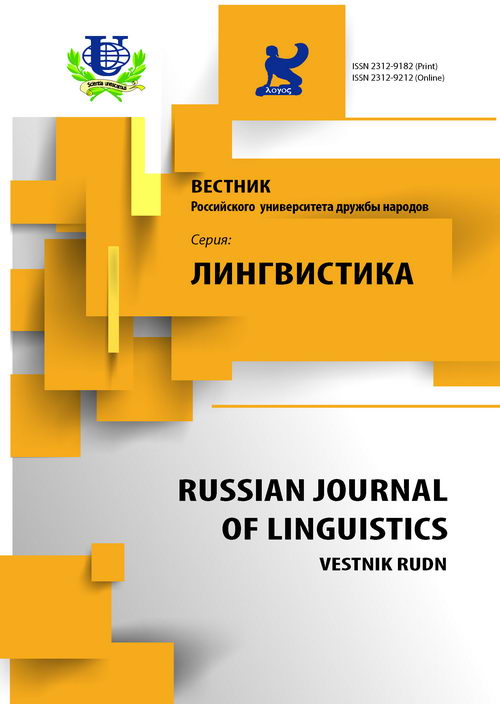Word, context and communicative meaning
- 作者: Istvan Kecskes -1
-
隶属关系:
- State University of New York
- 期: 编号 1 (2014)
- 页面: 7-18
- 栏目: Articles
- URL: https://journals.rudn.ru/linguistics/article/view/9561
如何引用文章
全文:
详细
This paper discusses the dynamic relationship of word meaning with context, which implies a reciprocal process between the two. On the one hand context specifies word meaning, and words can create their own context. According to current pragmatic theories meaning depends on its context. However, this is only one side of the matter. Words encoding standard prior contexts can create their own context. World knowledge is available for us in two forms: 1) Actual situational context in which the interaction occurs, and 2) Lexical units that encapsulate the history of their use, i. e., the situations in which they have been used (see Kecskes 2004, 2008, 2013). The paper introduces the Dynamic Model of Meaning that explains how actual communicative meaning is created as the result of the interplay between prior context encoded in the words used in the utterance and actual situational context in which the interaction takes place.
参考
- Leech Geoаfrey. Principles of Pragmatics. - London: Longman, 1983.
- Третьякова В.С. 2004. Речевой конфликт и аспекты его изучения. Юрислингвистика-5: Сервер электронных публикаций ММЦ АГУ.
- Ельмслев Л. Пролегомены к теории языка // Новое в лингвистике. - М., 1960. - Т. 1. - C. 303.
- Виноградов В.В. Русский язык. - М., 1947.
- Kecskes I. Dueling context: A dynamic model of meaning // Journal of Pragmatics. - 2008. - Vol. 40. - Issue 3. - P. 385-406.
- Kecskes I. Intercultural Pragmatics. - Oxford, UK: Oxford University Press, 2013.
- Фоменко Ю.В. Человек, слово и контекст (Концепция человека в современной философской и психологической мысли. - Новосибирск, 2001. - С. 164-168).
- Кацнельсон С.Д. Категории языка и мышления: Из научного наследия / Отв. ред. Л.Ю. Брауде. - М.: Языки славянской культуры, 2001.
- Лотман Ю.М. Внутри мыслящих миров: человек - текст - семиосферы - история. - М., 1966.
- Kecskes I. Situation-Bound Utterances in L1 and L2. - Berlin/New York: Mouton, 2003.
- Kecskes I. Lexical merging, conceptual blending, cultural crossing. - 2004.
- Kecskes I. On My Mind: Thoughts about Salience, Context, and Figurative Language from a Second Language Perspective // Second Language Research. - 2006. - Vol. 22. - No. 2. - P. 219-237.
- Третьякова В.С. Конфликт как феномен языка и речи // Известия Уральского государственного университета. - 2003. - № 27.
- Gee James P. Introduction to discourse analysis: Theory and method. - New York: Routledge, 1999.
- Падучева Е.В. Динамические модели в семантике лексики. - М.: Языки славянской культуры, 2004.














